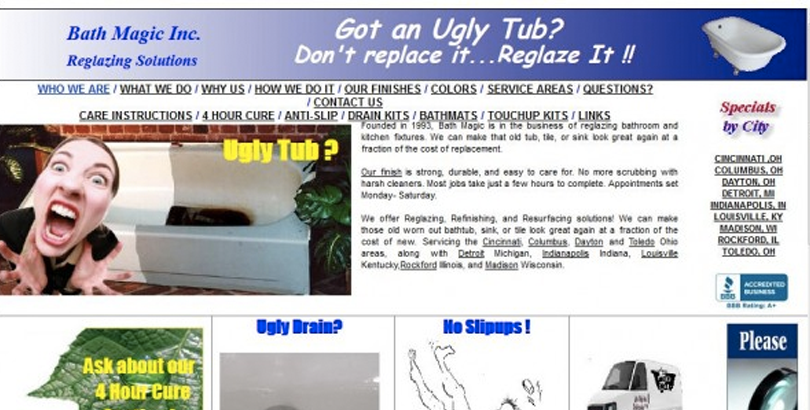CODING ETHICS: DESIGNING TRUST AMONG STRANGERS
As a society reveling in the growths, innovations and successes of the Technology Age, we're greeted on a near - daily basis with conflicts previous generations only barely missed. We've redefined social ethics and communication capabilities that mold how we interact with one another, both face to face and screen to screen.
With these changes comes conflict. To be frank, users have little to no trust in others in the virtual world. Which rightfully so, thanks to the culprits of Identity Theft, Online Scams, and other "evil" users who choose to avoid using internet powers for good. As Web Developers, how do we surpass these issues? How can we "design" trust into our websites and make them something to behold, rather than avoid?
On average, internet users decide within the first 10 seconds whether or not a site is "trustworthy." It's possible that by now, half of the viewers originally reading this article have already stopped, so thanks for sticking around!
To combat these issues, we've chosen a few key elements that ensure security and trust between user and website.
1. Basic Contact Information
Your contact info should be in a highly visible, easily accessible place. This provides the user evidence to validate your business' existence, as well as reach out to you should the need arise. Make sure your listed phone number is your business number (save your personal contact info for another day, trust us) and physical address are accurate. Google Maps results should bring the user to your store front in Wisconsin, not a Chinese restaurant in Bismarck, ND.
2. SSL Certificates
SSL stands for "Secure Sockets Layer," an encryption technology created by Netscape in the 1990s as a means of combatting unwanted users in the online world. This technology protects your user’s private information from eavesdroppers and other invaders seeking out user confidential information. Once you've activated SSL Certificate Encryption, users will be given a visual 'cue,' or notification in the form of an icon or green bar, alerting that their connection is secured. This reassures your users are safe, ergo more inclined to make a purchase or continue to use your web services.
3.Clearly Stated Shipping & Return Policies
In a recent survey conducted by Endicia, users often cite the Shipping and/or Return Policies as their reason for falling through on an online purchase. With issues, such as high shipping costs, complicated return processes or a complete lack thereof, it's no wonder certain companies are losing online users left and right. To avoid that bandwagon, we suggest incorporating the following key points in your Shipping + Return Policies:
· Clarity: Return policies should be simple to understand and easy to find on the website. The policy should outline what qualifies as returnable, whether the return means full refund or store credit, and the grace period allotted to make said returns.
· Convenience: Thanks to the beauty of e-commerce, online purchases are simple and easy, creating a huge convenience for users with lots of things to shop for in a minimal amount of time. Online ordering removes the user from the terrors of long lines, crowded stores and disgruntled fellow shoppers. Your return policy should do the same.
· Affordability: Roughly 49% of online shoppers lament the shipping costs as THE most tumultuous part of returning an online purchase. Poor experience on the customer side could mean a loss of customer business in the future. To keep your users happy, find ways to eliminate or minimize the return costs by using the U.S. Postal Service.
· Flexibility: We're given several deadlines in life that can often be stressful. Make your user’s day easier by breaking the standards of everyday return policies. Though 30 days is the standard window, 60 days seems generous and inviting. Finding what works best for you and your consumer creates mutually stress-free, enjoyable business relationships.
4. Customer Reviews
88% of online users trust online reviews as much as personal recommendations. These users are confident that fellow online shoppers provide truthful insight on their upcoming purchases. Despite the occasional disgruntled consumer, we advise your website to feature customer views in an easily discoverable place. Those reviews may result in an 88% increase in user reach (don't quote us on that, but you never know... ;) )
5. Confident, Clean Design
This aspect is somewhat common sense, but we felt it was worth noting for this post. For starters, let's look at these two homepages:
Nothing against BathMagic, but we'd personally go with Endy's website for our next purchase. Their design is clean, eye catching and beautiful both in functionality and design. One can never be too sure of another's branding choices, so it's safe to assume there's a reason behind their design. If you're looking to zero in your brand strategy with a uniform web message, we recommend keeping these key points in mind:
· Kick ALL CAPS to the curb - No one appreciates unwarranted yelling.
· Comic Sans is your enemy - Unless your consumers are all Comic Sans everything, we suggest avoiding this font at all costs.
· Edit Edit Edit – Have another pair of eyes read over the web copy to ensure there are no grammatical or spelling errors.
· Leave the Tacky Stock Images at Home – The Consumer knows a phony when they see one. If possible, create your own stock photos with employees or friends, or splurge for the decent stock photo online account. We recommend starting here.
· Keep It Simple – Your website layout should be simple and easy to navigate. Leave an open trail for your consumer to follow to your product or service. Those parts will speak for themselves.
We put this image together from an in-office concert and use it for our circulating Monday playlists. Great stock image, totally free!
We can't guarantee the sense of trust in users. However, we can guarantee that these are sure-fire starting points to building a trustworthy website. Trustworthiness starts with the business and ends with a purchase. Establish early, establish well, and you're on the right track to online confidence.
Need a little help with that website? Contact us and let our team build you a personally developed, 100% trustworthy custom website.




